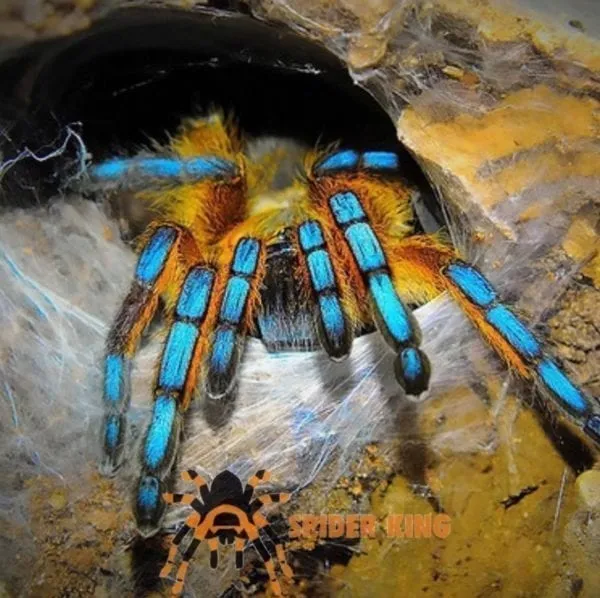Understanding the Golden Blue Leg Baboon Tarantula
The Golden Blue Leg Baboon Tarantula ( Idiothele mira) is a captivating species known for its striking appearance and intriguing behaviors. Native to South Africa, these spiders are admired by both novice and experienced keepers. This article delves into the comprehensive care guide, ensuring that you can provide the best possible environment for your new pet. The vibrant coloration, which includes a golden carapace and distinctive blue legs, makes it a favorite in the tarantula community. These spiders can live for many years with proper care, making them a long-term commitment for any enthusiast. Understanding their natural habitat and behaviors is key to successfully keeping them in captivity.
Habitat Requirements
Creating an appropriate habitat is crucial for the well-being of your Golden Blue Leg Baboon Tarantula. The enclosure should mimic their natural environment to ensure they thrive. This includes providing the correct space, substrate, temperature, and humidity levels. Proper setup is not only vital for their physical health but also for their psychological well-being, allowing them to exhibit natural behaviors. It is important to regularly monitor and adjust the environment to meet their specific needs throughout their life cycle. Consider that a well-designed habitat reduces stress and increases the chances of observing interesting behaviours.
Enclosure Size and Setup
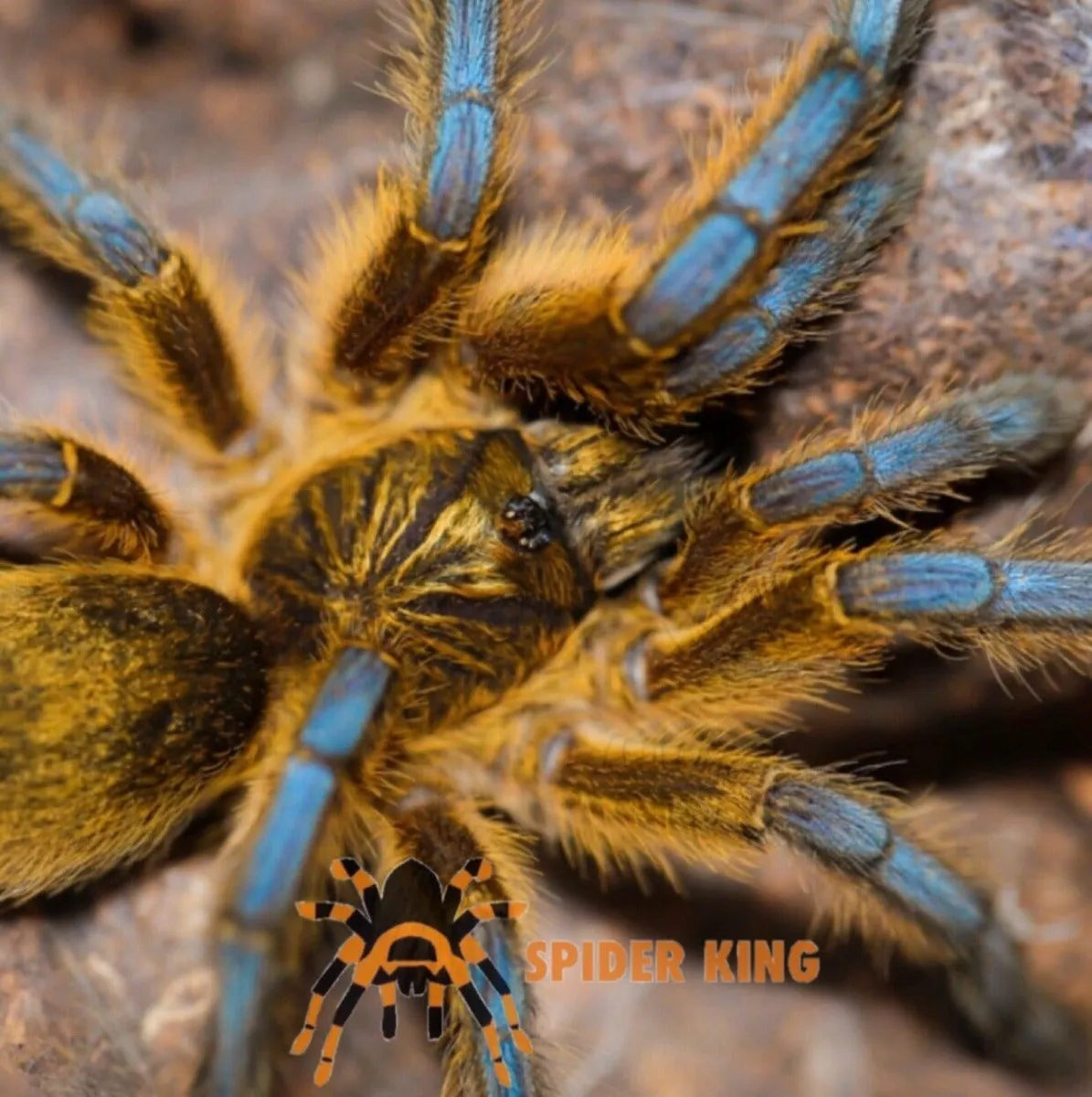
For adult Golden Blue Leg Baboon Tarantulas, a terrarium that is at least 12x12x12 inches is recommended, though a larger enclosure is always better, providing more space for the spider to move around. The enclosure should be secure, with a tight-fitting lid to prevent escape. These tarantulas are terrestrial, so the focus should be on floor space rather than height. Provide enough space for the spider to burrow and create a comfortable retreat. Ensure that the enclosure has proper ventilation to prevent the buildup of moisture and harmful gases.
Substrate and Decor
The substrate should be several inches deep to allow for burrowing. A mix of peat moss, coconut fiber, and a small amount of vermiculite is ideal for holding moisture while still allowing for burrowing. Avoid substrates that can be toxic or that harbor mites. Decorate the enclosure with cork bark, driftwood, or artificial plants to provide hiding places and a more naturalistic environment. Ensure that any decor is securely placed to prevent it from falling and potentially injuring the spider. Regular cleaning of the enclosure is also vital to remove any leftover food and feces to maintain a healthy environment.
Temperature and Humidity
Maintain a temperature between 75-85°F (24-29°C). A heat mat placed on the side of the enclosure can help regulate the temperature. Monitor the temperature with a reliable thermometer. Humidity should be maintained at around 60-70%. Achieve this by lightly misting the enclosure a few times a week or by providing a shallow water dish. Avoid over-misting, which can lead to mold growth. Use a hygrometer to monitor humidity levels. Proper temperature and humidity are critical for the tarantula’s health, molting process, and overall well-being.
Feeding Your Golden Blue Leg Baboon
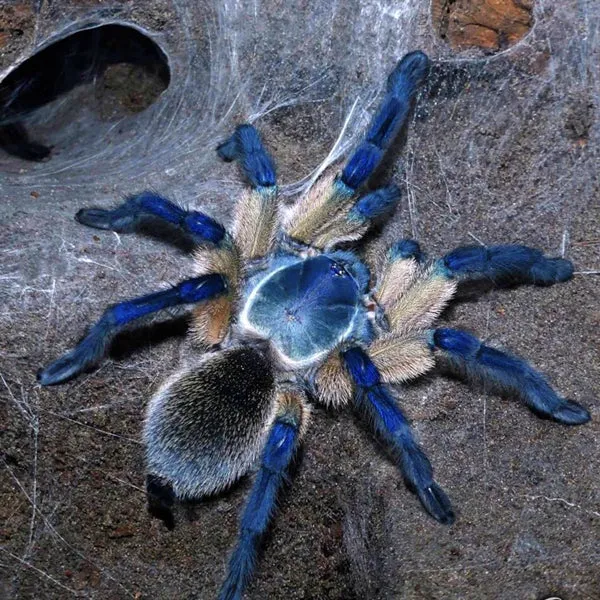
A proper diet is essential for the growth and health of your Golden Blue Leg Baboon Tarantula. They are primarily insectivores, so feeding them a variety of insects is important. The type of insects you feed, the frequency, and the amount will affect their health and molting. Regularly monitor your spider’s abdomen to gauge its nutritional needs and avoid both overfeeding and underfeeding. Ensuring a balanced diet can prolong their life span and maintain their vibrant appearance.
What to Feed
Provide a variety of insects to ensure a balanced diet. Suitable food items include crickets, mealworms, roaches, and locusts. Ensure that the insects are gut-loaded before feeding them to your tarantula. Gut-loading involves feeding the insects a nutritious diet so that they pass these nutrients on to your tarantula. Avoid feeding insects that have been exposed to pesticides or other harmful chemicals. Occasionally, you can offer pre-killed insects, particularly if you have a spider that is slow to hunt. Always remove any uneaten food within 24 hours to prevent mold growth.
Feeding Frequency
The feeding frequency depends on the age and size of your tarantula. Spiderlings should be fed two to three times a week. Sub-adults can be fed once or twice a week, while adults typically only need to be fed once a week or every other week. Adjust the feeding schedule based on your spider’s appetite and abdomen size. A well-fed tarantula will have a plump abdomen. Reduce feeding before a molt, as the spider will likely refuse food. It is important to observe their behavior to find the perfect feeding schedule.
Watering and Hydration
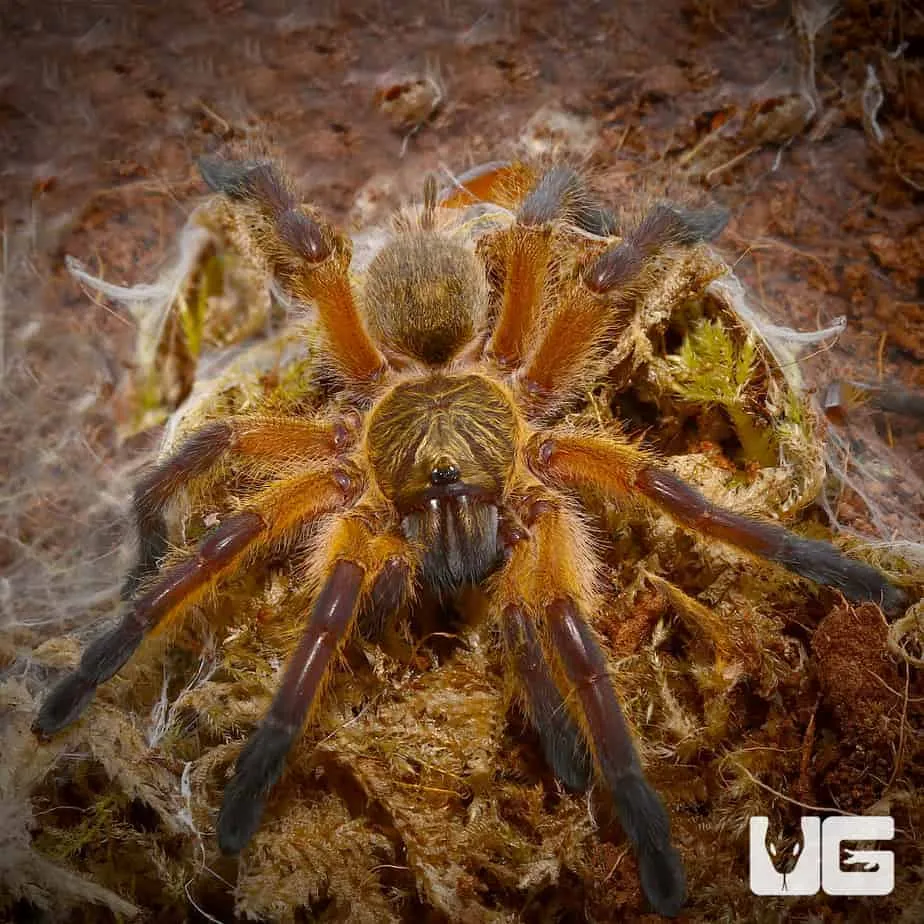
Always provide a shallow water dish with fresh, clean water. This allows the tarantula to drink and maintain hydration. Ensure the water dish is shallow enough to prevent the tarantula from drowning. Regularly refill the water dish. You can also lightly mist the enclosure once or twice a week, especially if the humidity is low. Ensure that you’re not over-misting, as it can cause the enclosure to become overly damp and lead to mold growth, creating an unhealthy environment. Always check for signs of dehydration, such as a wrinkled abdomen, and adjust the watering schedule accordingly.
Handling and Temperament
The Golden Blue Leg Baboon Tarantula is known for its defensive temperament and should be handled with caution. While individual tarantulas may vary, it’s essential to prioritize safety. Understanding their behaviors, recognizing signs of stress, and knowing how to react will help prevent bites and ensure the well-being of both you and your pet. Remember that, as with any exotic pet, the best practice is to observe them and appreciate them from a distance, reducing potential stress for the tarantula.
Safe Handling Practices
It is generally recommended to avoid handling these tarantulas, especially if you’re a beginner. If handling is necessary, do so with extreme caution. Always approach slowly and gently, using a soft brush or tool to gently coax the tarantula onto your hand. Handle the tarantula close to the ground or a soft surface to minimize the risk of injury if it falls. Avoid sudden movements and do not squeeze or restrain the tarantula. Wash your hands thoroughly before and after handling.
Understanding Defensive Behaviors
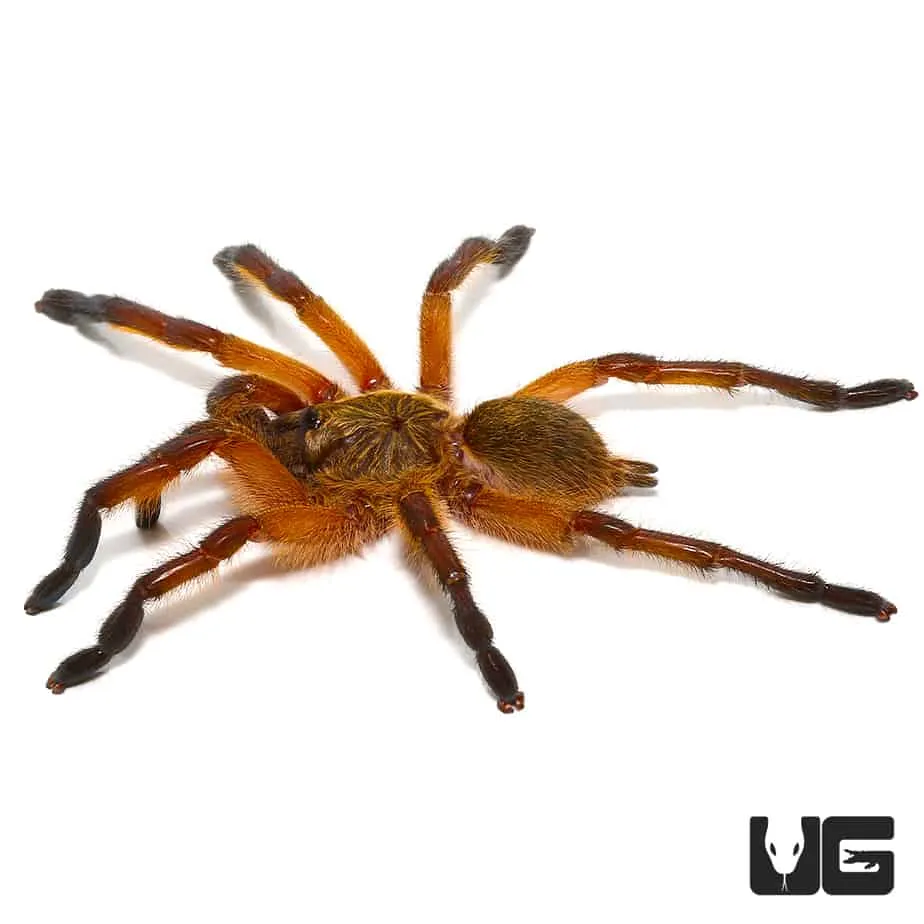
Golden Blue Leg Baboon Tarantulas are known for being fast and defensive. They may display threat postures such as raising their front legs, flashing fangs, or flicking urticating hairs. If the spider displays these behaviors, it is a clear sign that it feels threatened. Back away and leave it alone. Bites from these tarantulas can be painful, and their venom can cause localized symptoms. It’s essential to respect their boundaries and avoid provoking them. Observe them in their enclosure without any interaction. Their behaviors can be fascinating to watch, and observing them is one of the joys of keeping them.
Common Health Issues and Care
Like all tarantulas, Golden Blue Leg Baboons can be susceptible to certain health issues. Keeping a close eye on their behavior, appearance, and environment is crucial to identifying and addressing any problems early. Regular maintenance, proper diet, and suitable housing conditions contribute to a healthy and long-lived tarantula. This involves understanding the signs of common ailments and taking preventative measures to ensure their well-being. Always consult with an experienced tarantula keeper or a veterinarian specializing in exotic animals if you notice any concerning symptoms.
Recognizing Signs of Illness
Some signs of illness in Golden Blue Leg Baboon Tarantulas include a loss of appetite, lethargy, changes in behavior, or unusual posture. If your tarantula stops eating or becomes inactive, it could indicate a problem. Watch for signs of mites, which can be seen as small, moving dots on the spider. Look for any physical abnormalities, such as injuries or swelling. If the abdomen looks unusually small or wrinkled, it could indicate dehydration. If you observe any of these symptoms, consult with an expert on tarantula care.
Preventative Measures
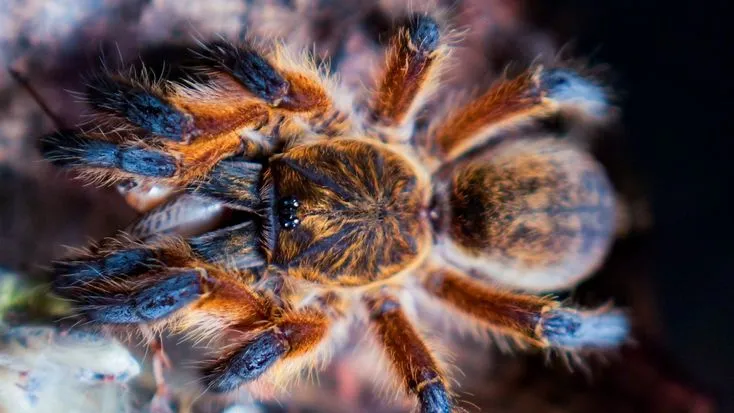
Ensure that the enclosure is clean and well-maintained to prevent the growth of mold and bacteria. Provide a balanced diet and avoid overfeeding. Regularly check the water dish and keep it clean to prevent bacterial growth. Quarantine new tarantulas before introducing them to your collection to prevent the spread of diseases or parasites. Maintain the correct temperature and humidity levels. Regular observation and attention to detail are key to preventing health issues and ensuring that your Golden Blue Leg Baboon Tarantula thrives. A healthy tarantula is a happy tarantula, and by following these preventive measures, you are setting your pet up for long-term success.
Molting and Growth
Molting is a natural process for all tarantulas, including the Golden Blue Leg Baboon. This involves shedding their exoskeleton to allow for growth. Understanding the molting process is vital to providing the correct care and ensuring the tarantula’s safety during this vulnerable time. The frequency of molting decreases as the tarantula matures. Providing a stress-free environment is vital during this period. Never disturb or handle your tarantula during or shortly after molting, as they are particularly delicate.
The Molting Process
Before molting, the tarantula will typically stop eating and may become inactive. They often create a webbing mat in their enclosure. The tarantula will lie on its back to shed its exoskeleton. The process can take several hours, or even a day. After molting, the tarantula’s new exoskeleton will be soft and vulnerable. Do not feed your tarantula for several days after molting to allow the new exoskeleton to harden. Provide a clean water dish and maintain the proper humidity levels.
Growth Stages and Size
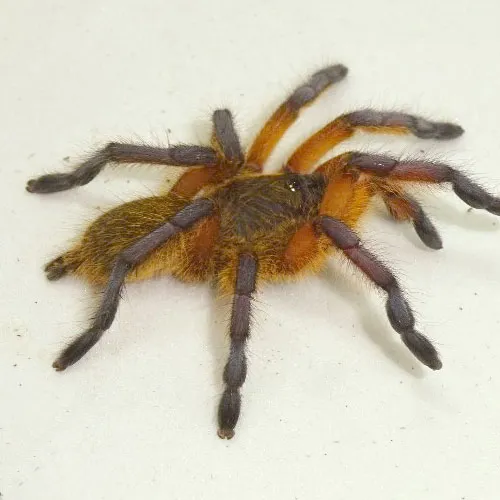
Golden Blue Leg Baboon Tarantulas go through several growth stages. Spiderlings are small and molt frequently. As they mature, they molt less often. Adult females are typically larger than males and can reach a leg span of up to 6 inches. Male tarantulas tend to be smaller and often molt for the last time when they reach maturity. The size and rate of growth depend on various factors, including diet, temperature, and genetics. Proper care and a suitable environment are key to ensuring healthy growth and molting throughout your tarantula’s life.
